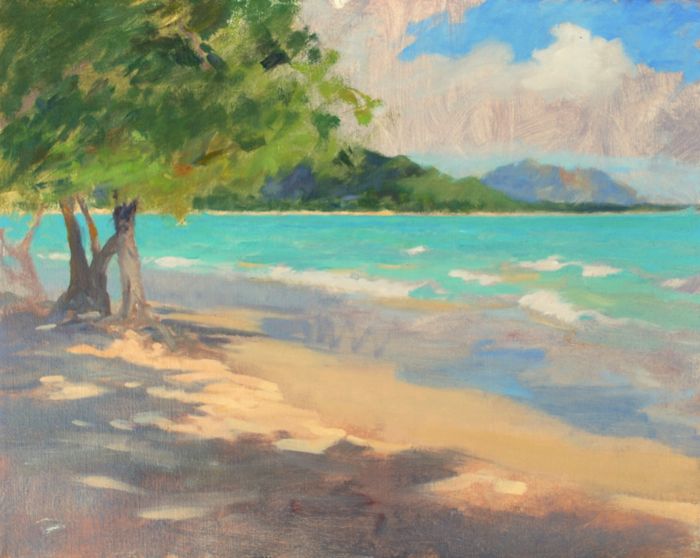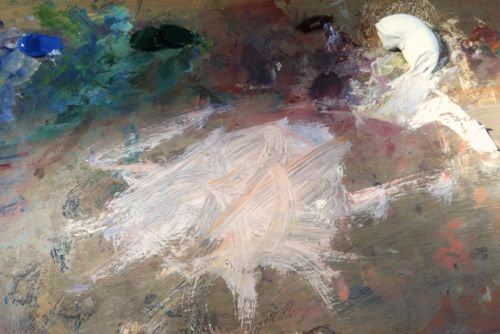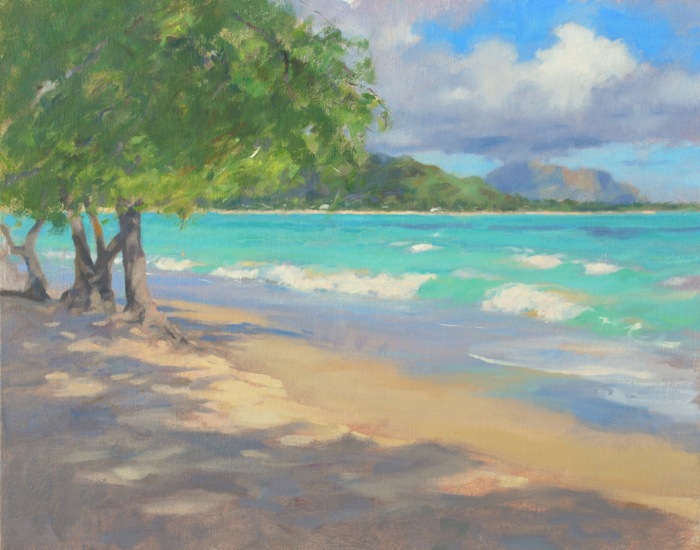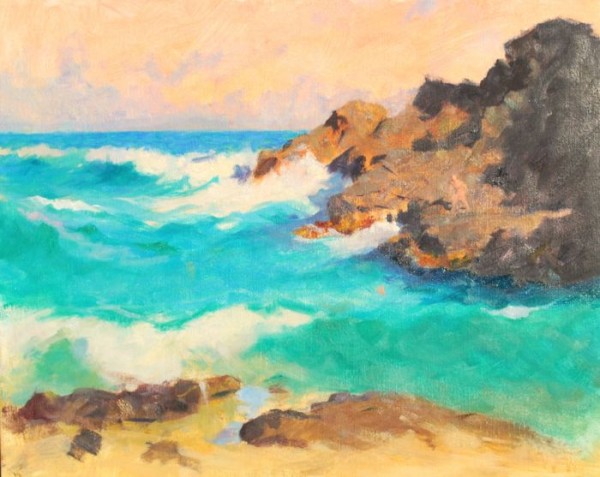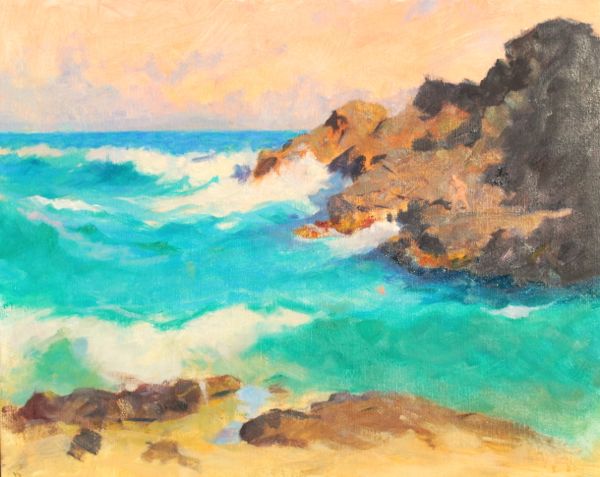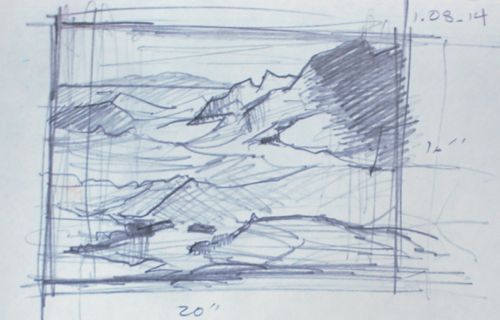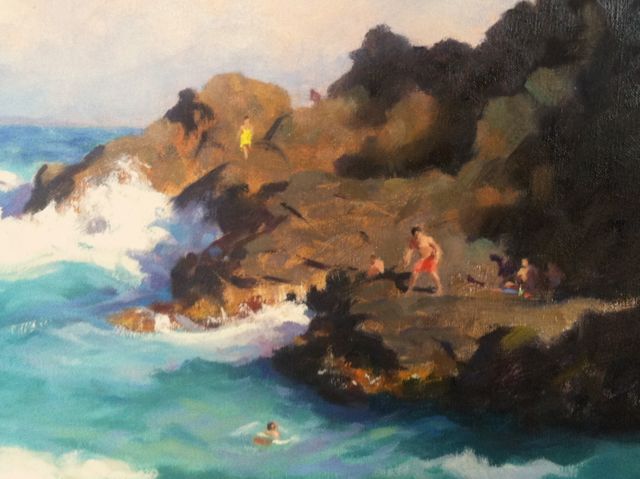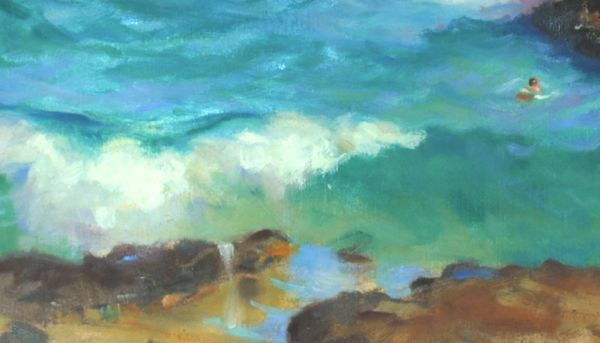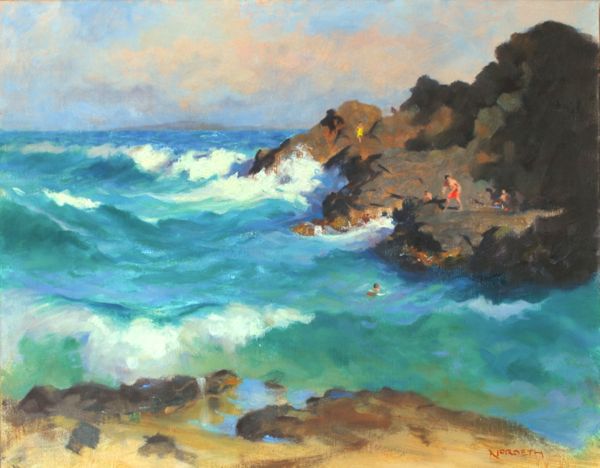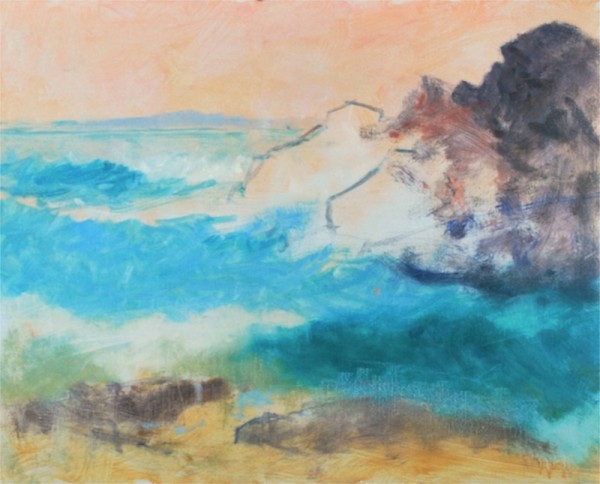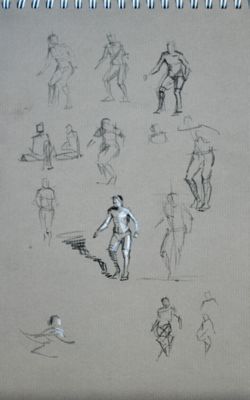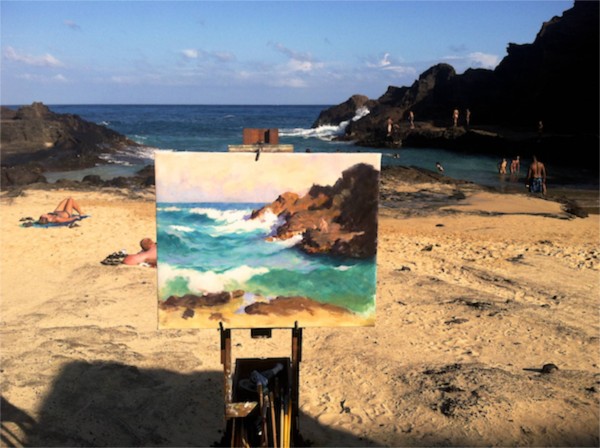The weather has been challenging; a hurricane was anticipated and this kept me off the beach for several days. But, we dodged another one and so, thankfully, we’re back with good weather again. And I’m happily re-engaging with this painting.
Staying fresh is a matter of exercising taste. A composition has a point to it, a purpose…and if the artist identifies what the point is early enough, questions of what to include and what to eliminate in the painting are answered by whether they help or hinder the desired final effect.
I’m largely concerned with getting the feel of the light…I mean the color of early daylight on the various elements, and making something beautiful with the composition by leading the eye through the elements in a pleasing way. Everything I do, anything I add or subtract, should contribute to this purpose.
Here’s where I left off:
The composition is firmly in place and I’m satisfied that I’ve done as much as I can with the basic shapes. This is, essentially, the painting in terms of design, that what we will irrevocably be “living with” in terms of the pattern of shapes. Today’s and future sessions will be devoted to bringing the painting up; that is, bringing things to life in terms of my objectives.
I’m also wary of overshooting the mark…one can lose the overall unity of the painting by getting caught up in parts and details, observations that don’t contribute but actually clutter the painting. I’ll need to be very aware, especially when it becomes overcast for lengthy periods because I can overdevelop an area while waiting for the light to return.
Resuming the Work
After setting up at my location, my first step is to address whatever area of the painting is most out-of- step with the painting’s progress. In this case it’s the furthest area of the landscape, the sky and clouds in the right background. Since I have a nice sky today I can easily jump in where I left off before.
The whites of the sky need to be adjusted down a slight bit from the whites in the waves, in order to keep them back in the painting. This means graying them slightly. So I mix a slight gray using Titanium white, Ultramarine, a red (Indian, Cadmium, or Light Red), perhaps some Yellow, usually ochre for this time of day, and place this in the sky loosely. By loosely, I mean I create a shade of the right value from these various colors, but do not mix them so completely that the colors lose their individuality. This provides a tone of a single value but with varied color temperatures in it.
The clouds are in motion and the sunlight falling upon them is changing rapidly, so with this light gray in place over all the cloud masses, I can move shapes easily into a more satisfying design. The effects of clouds on the demeanor of a painting is worth noting as they can help express many different moods. Clouds have a lot of personality! I refresh the blue of the sky with Cobalt blue, a thin layer brushed over the prior work. With this I can paint edges of white and blue into one another, creating softer edges on the forms.
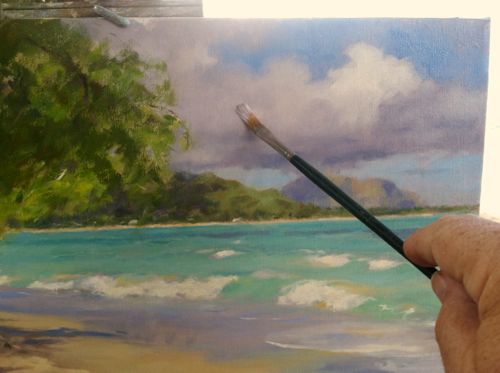
As I work on this, I eventually find myself over working an area, so I make a point of leaning away from the work (I’m seated) and actually keeping the seat at a distance from the painting so that I need to extend my arm to paint. The idea is to keep me from getting nose-to-nose with the painting. I also use an overhand grip on the brush, so that I can hold it with the brush handle cradled in the palm of my hand…this also keeps me back a bit more from the painting. And I try to move from area to area. Water, sky, shadow, light. Moving all the areas slowly forward, but (hopefully) in a way that stays unified. If an area is worthy of the eye’s interest , then I will develop it more carefully. If not, I will try to simplify it as much as I reasonably can.
One of my main areas of interest is in the colors of the shadows in the foreground. I find such areas to be quite beautiful in themselves. So I enjoy finding color combinations that work within the general value of the shadow, broken colors applied with varied brushstrokes that combine to create vibration of color like what I’m seeing.
As the session draws to a close, I’ve made changes in almost every area of the painting. Lights and darks in the trees, enhancements of the waves and reflections in the sand, and more refined observations in general.
I’ll be writing another post on the painting soon. Thanks for the coming along!

